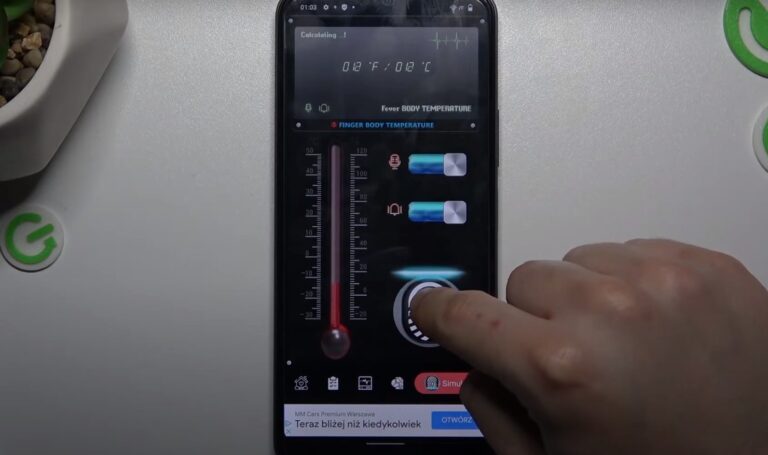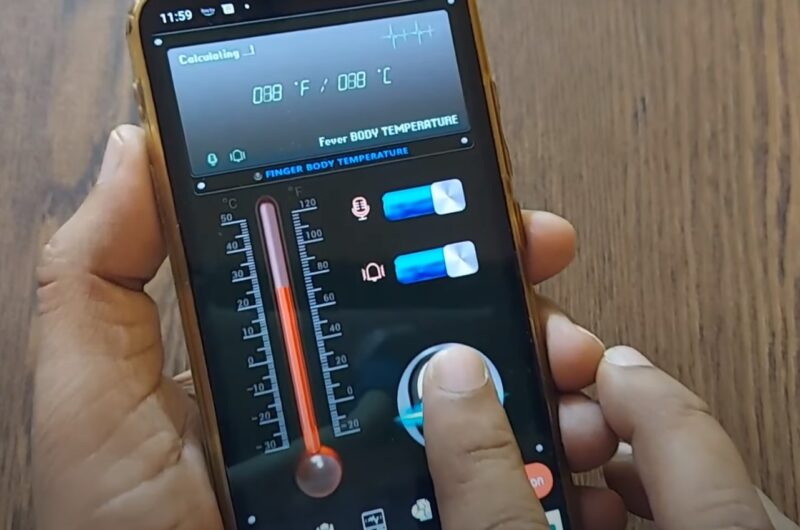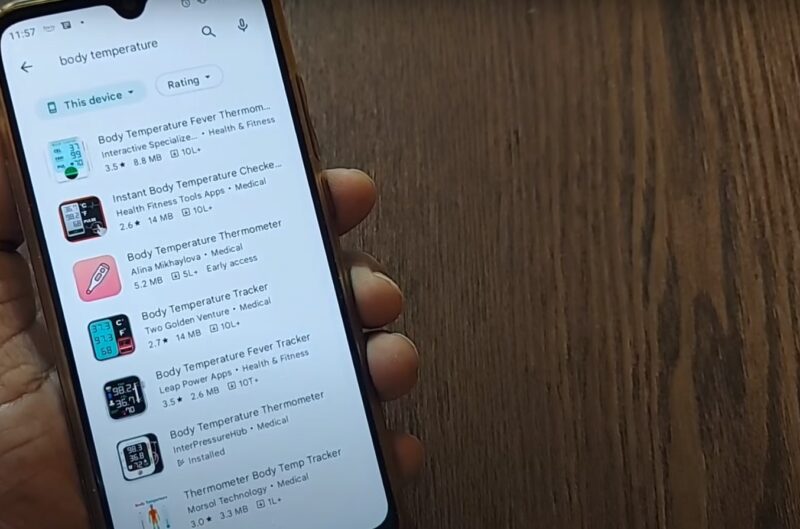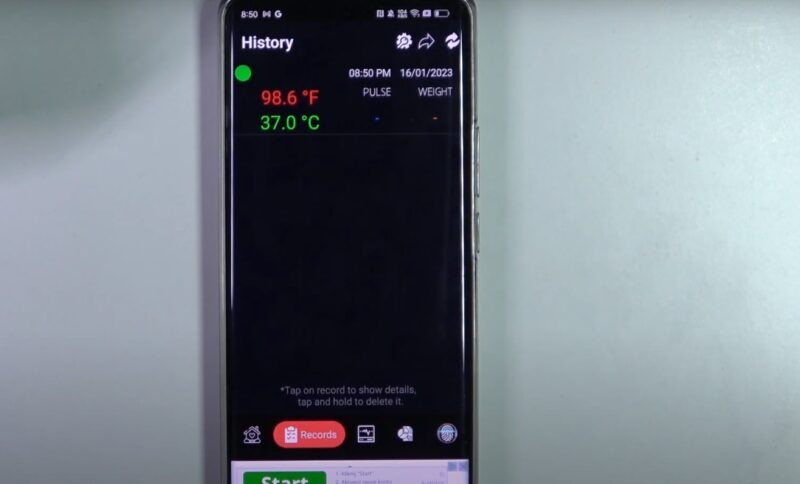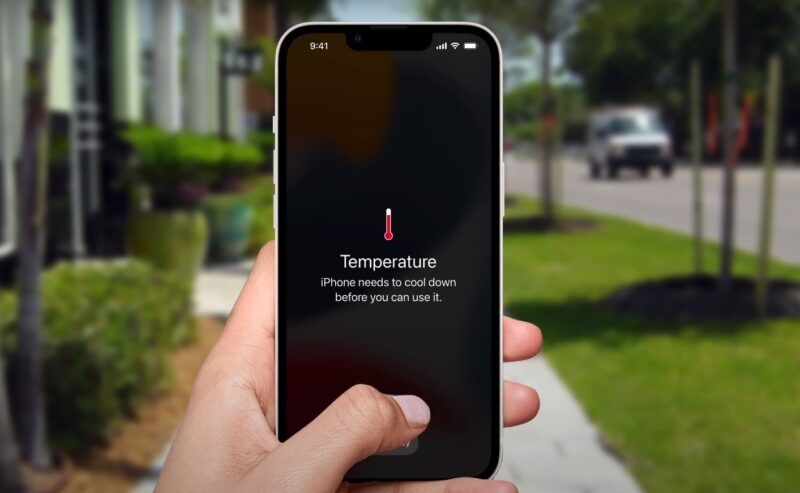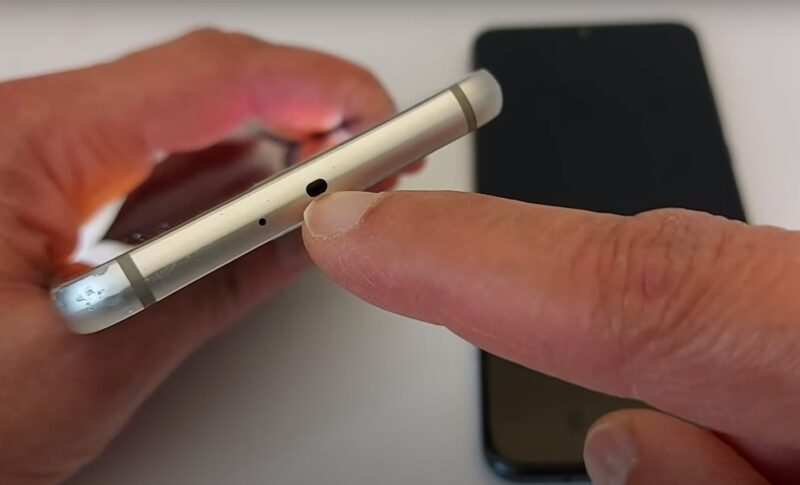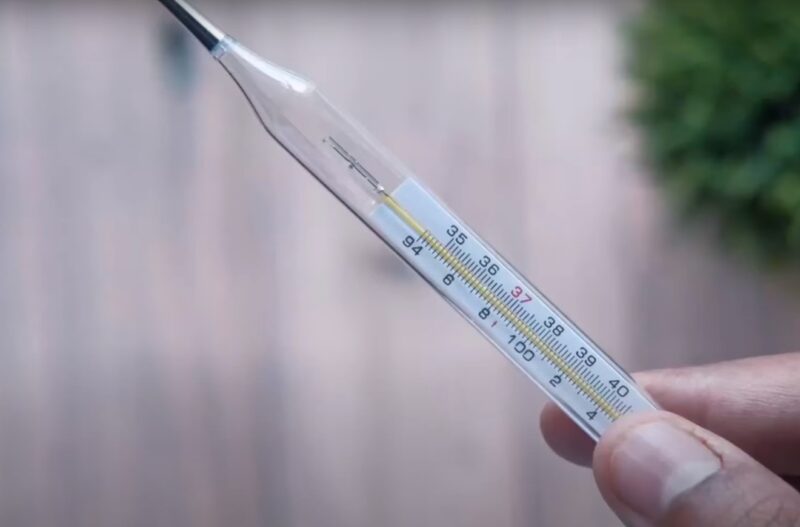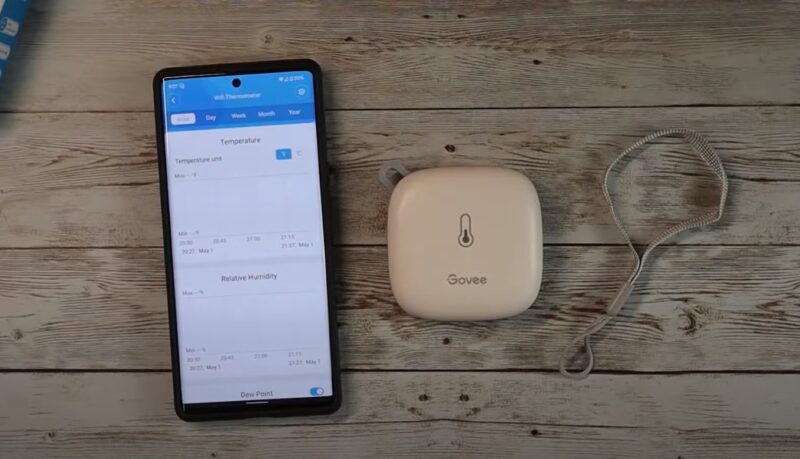In the age of technology, smartphones are no longer just communication tools; they have transformed into multifunctional devices capable of performing a variety of health-related tasks, including checking your body temperature.
Utilizing advancements in health technology, specific applications in conjunction with smartphones allow individuals to monitor their body temperature with ease. This technique serves as an accessible way to keep track of one’s health, either for personal interest or under a healthcare provider’s advice.
Table of Contents
ToggleKey Takeaways
- Smartphones, with proper apps and accessories, can measure body temperature.
- Accurate temperature measurement hinges on using reliable thermometers and following best practices.
- Smart thermometer apps may offer additional health monitoring features.
The Basics
Body temperature is the measure of the body’s ability to generate and dissipate heat. It is a vital sign that reflects the balance between the heat produced by metabolism and the heat lost to the environment.
Monitoring it can be crucial for detecting a fever, which is often a sign of an infection or other health issue. Maintaining a normal body temperature is essential for enzymatic reactions and bodily functions to occur properly.
Normal Range
The normal body temperature range for a healthy adult can vary, but it is typically cited as 98.6°F (37°C). However, it can fluctuate from 97°F (36.1°C) to 99°F (37.2°C), influenced by factors such as time of day, age, physical activity, and menstrual cycle in women.
Persistent deviations from this range could be indicative of underlying medical conditions and warrant professional medical attention.
Smartphone Technology
Modern smartphones are equipped with various sensors that allow users to employ their devices in unexpected ways, including temperature measurements. These techniques offer convenience and innovation in health monitoring and environmental assessment.
Thermal Imaging and Infrared Sensors
Thermal imaging technology utilizes infrared sensors to detect heat and visualize temperature distribution. Smartphones that have an infrared sensor can measure temperature by detecting infrared radiation emitted from the body or object.
This is effective for both medical purposes, like checking for fever, and industrial applications, such as identifying heat leaks in a building.
- Example: Some smartphones integrate infrared sensors directly, enabling functionalities like measuring body temperature.
- Limitation: The accuracy can be influenced by external factors and should not replace medical-grade devices.
Built-In Sensors
The built-in sensors are primarily designed to monitor the device’s internal temperature. While not intended for clinical use, some apps attempt to repurpose these sensors for estimating external temperatures, with the understanding that results may not be precise.
- Usage: Requires specific apps that access the smartphone’s internal sensors.
- Note: These readings are estimations and are suitable primarily for informational purposes.
Bluetooth-Enabled External Devices
Bluetooth technology has enabled the development of external devices that can measure temperature accurately and transmit that data to a smartphone. These devices include smart thermometers that pair with health apps via Bluetooth.
Devices such as Kinsa Smart Ear thermometers connect to an app, providing a seamless and accurate way to track temperature. These Bluetooth-enabled devices generally provide readings comparable to traditional thermometers.
Thermometer Apps and Smart Thermometers
Top Thermometer Apps
Thermometer apps have become a popular means to record and monitor temperatures using a smartphone. For example, Thermometer++ is a noteworthy app designed to provide approximate ambient temperature readings using the device’s sensors.
Another app, iCelsius, offers a range of features including temperature trends and graphs. However, for more precise readings, external smart thermometer devices are recommended, which connect with apps to give accurate results.
How Smart Thermometers Work
A smart thermometer operates by measuring body temperature with a physical probe and transmitting the data to a smartphone app. Other features include the ability to track changes over time and offer guidance on health-related actions.
The accuracy of these devices mirrors that of traditional medical thermometers, making them a reliable tool for home health monitoring.
Integration with Health Apps
One of the valuable aspects of modern smart thermometers is their ability to integrate with comprehensive health platforms like the Apple Health app. This integration allows users to store their temperature data alongside other health metrics, creating a centralized location for health information.
Apps like these often support trend analysis and share data with healthcare professionals, aiding in telemedicine and personal health management.
Measurement Process and Best Practices
Achieving an accurate reading with a phone involves specific steps and considerations for reliability. The measurement process must be conducted carefully, and interpreting the results requires an understanding of what constitutes a normal or abnormal reading to determine when medical attention may be necessary.
Preparing for an Accurate Reading
Modern phones equipped with an infrared sensor can take a body temperature reading. Before starting, ensure that the sensor is clean and unobstructed. For those using a smartphone app that pairs with a smart thermometer, it’s important to follow specific pairing instructions for the device.
If the phone or app requires calibration, follow the instructions meticulously. Take readings in a room with a stable temperature, avoiding drafts, direct sunlight, or humidity.
Interpreting the Readings
Once the reading is taken, one must know how to interpret the results:
- Normal Body Temperature: A standard reading is typically around 98.6°F (37°C), but can vary slightly.
- Variations: Understand that body temperature can fluctuate due to various factors like time of day and physical activity.
- Consistency: For reliable readings take multiple measurements at the same time each day and under similar conditions.
When to Seek Medical Attention
If the reading is significantly above normal and accompanied by symptoms, one should contact a healthcare professional. Also, a fever that does not subside or is recurrent can be a sign of a more serious condition.
It’s important to consult with a healthcare provider for further evaluation if the readings are consistently abnormal or if there is any concern about a person’s health status.
Factors Affecting Accuracy and Reliability
1. Environmental Variables
Ambient Temperature: The temperature of the surrounding environment can significantly influence the readings of noncontact measurements. For example, performing a check in an overly hot or cold room may result in measurements that do not accurately reflect the individual’s true body temperature.
Light Conditions: Inadequate lighting or direct sunlight can interfere with sensors, such as infrared thermometers, potentially leading to misleading readings.
2. Device-Specific Limitations
Sensor Capabilities: Some phones come equipped with infrared sensors capable of measuring temperature. However, the quality and calibration of these sensors can vary, affecting the current readings’ accuracy and reliability.
Attachment Quality: Using attachments like a thermal camera or a digital thermometer can provide additional functionality for temperature measurement, but the precision of these devices hinges on their individual quality and compatibility with the phone.
3. User Error
How a user operates the device can cause discrepancies in readings. Ensuring the correct distance and angle when using contactless methods is crucial for reliable results. Users must periodically calibrate their devices as per the manufacturer’s instructions to ensure ongoing accuracy, as failing to do so can lead to incorrect assessments.
By carefully considering these variables, users can improve the likelihood of obtaining accurate and reliable body readings with their phones.
Compatibility and Device Requirements
Android and iOS Platforms
Smartphones running on Android or iOS platforms have varying levels of support for temperature measurement. Devices that include an infrared (IR) sensor have the potential to measure it directly. However, most current iPhones lack this hardware feature, thus they require an external device.
Android phones show a more diverse range, with some models featuring built-in sensors capable of this measurement.
Connection Options: Bluetooth and Headphone Jack
For smartphones without built-in temperature sensors, external devices can be connected either via Bluetooth or the headphone jack. Bluetooth enables wireless communication with compatible devices like smart thermometers or smartwatches that can record heart rate and transmit the data to the phone.
The headphone jack, though increasingly rarer in new models, allows the connection of traditional wired thermometers.
Additional Sensor Technology
Beyond IR sensors, advanced features like GPS and heart rate monitors enhance the functionality of health-related applications. Smartphones with these technologies can provide more comprehensive health data.
GPS can be used to provide weather-related data, while heart rate sensors contribute to a more thorough health analysis when combined with temperature data, particularly on compatible Android and iOS smartwatches.
Data Tracking and Health Insights
Smartphone applications that measure body temperature often include the ability to display graphs and charts. These visual aids are not only user-friendly but also make it easier to spot trends and fluctuations over extended periods.
Through this data analysis, users can observe the impacts of lifestyle choices, illness progression, or effectiveness of medications on their body temperature.
Integration with Fitness Trackers and Health Databases
Many of these thermometric phone apps can integrate seamlessly with broader health ecosystems. They connect with fitness trackers and health databases, consolidating various health metrics alongside temperature data.
This provides a holistic view of the user’s health and makes it easy to share valuable data with healthcare providers for more personalized care.
Benefits of Long-Term Temperature Monitoring
Long-term monitoring yields insights that single readings cannot. It may reveal subtle health patterns or warn of potential health issues before they become more serious.
Consistently tracking body temperature also helps individuals tailor their fitness and wellness routines to align with their body’s responses, ultimately contributing to better health and wellness management.
Choosing the Right Solution for Your Needs
If you want to measure body temperature by using a phone, individuals must consider the trade-off between convenience and clinical accuracy, as well as lifestyle factors that influence usage.
Convenience vs. Clinical Accuracy
For those prioritizing ease of use, a phone’s ability to check temperature can be a convenient way to get quick readings. However, one should be aware that the precision of these measurements may not always match that of a traditional thermometer.
Built-in sensors or digital thermometer attachments can provide fast readouts in both Fahrenheit and Celsius, but for clinical accuracy, especially in medical situations, traditional methods are recommended.
Lifestyle and Usage Considerations
Individuals who are constantly on the move may find these apps and attachments a convenient solution for their quick-paced lifestyle. Yet, those who require rigorous monitoring should consider the consistency and reliability of devices explicitly designed for medical purposes, especially if the temperature data plays a crucial role in health management.
Recommendations for Different Types of Users
- Casual Users: Smartphone apps that estimate temperature provide a high degree of convenience for casual monitoring. They might not need the most precise readings.
- Travelers: Compact digital thermometer attachments for phones are suitable for individuals who wish to travel light. These can offer a more accurate reading.
- Health-Conscious Users: For those who meticulously track their health data, dedicated medical-grade thermometers that sync with smartphones offer both convenience and enhanced accuracy.
Additional Tools and Accessories
External Thermometers and Their Advantages
External thermometers offer a reliable alternative to built-in sensors. They typically come in the form of Bluetooth thermometers, which can pair with an app on the user’s smartphone.
The principal advantage of using an external thermometer is its precision and the ability to record temperatures over time. For instance, the Temp Stick can track ambient temperatures and is valued for its accuracy and ease of use.
Smartphone Accessories
Smartphone accessories have been developed to make temperature measurement more accessible. These include thermal camera attachments which convert smartphones into devices capable of visual heat detection. The high accuracy of this technology makes thermal cameras a useful tool for this purpose.
Similarly, the Govee Temperature Monitor and the SensorPush Thermometer are attachable devices that work alongside a dedicated app to provide real-time temperature readings. These accessories leverage the strength of smartphone connectivity to offer continuous monitoring and alerts.
FAQs
Can I use any smartphone for temperature measurement, or are there specific models required?
Only certain smartphones have built-in infrared sensors suitable for this purpose. If your phone lacks this feature, you’ll need an external device that connects via Bluetooth or the headphone jack.
How often should I calibrate my smartphone or external device for accurate temperature readings?
Calibration frequency depends on the device manufacturer’s guidelines. Generally, it’s recommended to calibrate your device periodically, especially if you notice any inconsistencies in the readings.
Are there specific environmental conditions ideal for taking temperature measurements with my smartphone?
Yes, it’s best to take readings in a stable environment, away from direct sunlight, drafts, and significant humidity variations. This ensures more accurate and consistent results.
Can smartphone temperature readings be affected by the phone’s own heat?
Yes, especially if the phone has been in use for an extended period or exposed to high temperatures. It’s advisable to let the phone rest and cool down if it feels warm before taking a reading.
Is it safe to rely on smartphone temperature readings for medical decisions?
While smartphone temperature readings can provide a convenient overview, they shouldn’t replace medical-grade devices for critical health decisions. Always consult with healthcare professionals for accurate medical advice.
Can I use these apps to check the temperature of objects other than the human body?
Some apps and phone attachments, especially those with infrared sensors, can measure the temperature of objects. However, accuracy and functionality can vary, so it’s important to check the specific capabilities of the app or attachment you’re using.
Summary
In conclusion, using your phone to check body temperature can be a convenient and efficient method. It’s important to choose the right app and understand that while phone-based thermometry can offer quick results, it may not always be as accurate as traditional methods.
For best results, follow the app’s instructions carefully and consult a healthcare professional if you have concerns about your readings.


